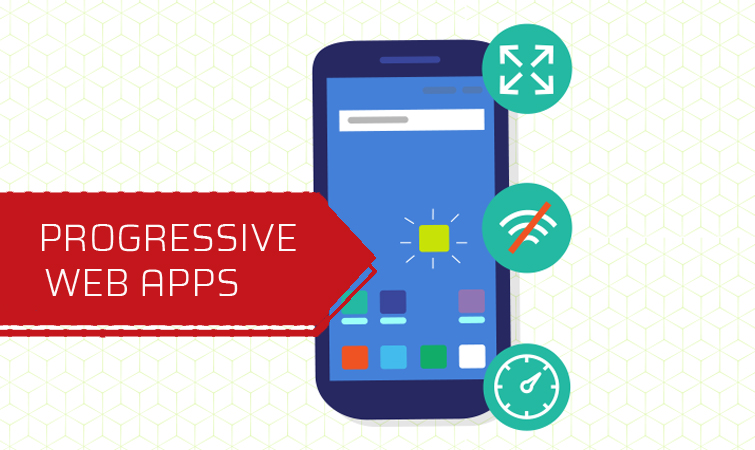What is a PWA?
Progressive web apps (also known as PWAs) are a hybrid of native mobile apps and websites. PWAs are web applications that load like websites but function like a native mobile app with features like home screen app icon, responsive design, fast load speed, offline functionality, and more.
They can be launched with a single click from the user’s mobile home page, eliminating the need to go through the entire app installation procedure. Service employees are employed to deliver the finest of both the online and the mobile native worlds.
To deliver content, these service workers sit between the network and the device. They are capable of efficiently employing cache techniques, among other things. This enables PWAs to function in both online and offline modes. PWA is used by many best web development companies in Chennai.
The internet is a fantastic platform. The web is a unique platform to develop software on because of its ubiquity across devices and operating systems, its user-centered security paradigm, and the fact that neither its definition nor its implementation is controlled by a single business. It’s feasible to search it and share what you find with anybody, wherever, thanks to its intrinsic linkability.
Functionality, Dependability, and Installability
Every time you visit a website, it is current, and your interaction with it can be as brief or as long as you like. With a single codebase, web apps can reach anybody, anywhere, on any device. Platform-specific applications are well-known for their extensive functionality and dependability. On home screens, docks, and taskbars, they’re always there. They work independently of whether or not you have a network connection.
They’re released as a stand-alone experience. They can read and write files from the local file system, interact with data stored on your devices, such as contacts and calendar events, and access hardware connected through USB, serial, or Bluetooth. You may use these apps to take images, view what songs are playing on the home screen, and control music playback while in another program.
Platform-specific apps feel like they’re a part of the device they’re running on. In terms of capabilities and reach, platform-specific applications are the best of the capabilities, while web apps are the best of the reach. So, how do Progressive Web Apps fit into the picture?
Progressive Web Apps (PWAs) use current APIs to provide greater functionality, dependability, and installability while reaching anybody, anytime, on any device with a single codebase.
The Three Pillars of an App
Progressive Web Apps are web applications that have been developed to be powerful, dependable, and easy to deploy. These three pillars transform them into a platform-specific application-like experience.
Capable
Today’s web is fairly capable in and of itself. WebRTC, geolocation, and push notifications, for example, can be used to create hyper-local video chat software. With WebGL and WebVR, you can make that app installable and virtualize those chats. Developers may now tap into other ecosystems, such as C, C++, and Rust, and bring decades of labor and capabilities to the web using WebAssembly. For example, Squoosh, the app uses this for advanced image compression.
Until recently, these features could only be claimed by platform-specific apps. While some functions remain outside the reach of the web, current and upcoming APIs are aiming to change that by adding features like file system access, media controls, app badging, and complete clipboard support to the mix. All of these features are made possible by the web’s secure, user-centric authorization model, which ensures that visiting a website is never a risk.
Web apps are more capable than ever before, thanks to current APIs, WebAssembly, and new and future APIs, and their capabilities are only increasing.
Reliable
Regardless of the network, a solid Progressive Web App feels fast and dependable.
When it comes to attracting consumers to use your experience, speed is crucial. In fact, the probability of a visitor bouncing increases by 123 percent as page load times climbs from one second to ten seconds. After the onload event, the performance continues. Users should never be concerned about whether or not their actions, such as pressing a button, were recorded. The scrolling and motion should be as fluid as possible.
Performance has an impact on your overall experience, from how people perceive your app to how well it works. Finally, dependable programs must work regardless of the network connection. Users want apps to start up even when connected to a slow or unstable network, or even when they are offline.
Even if sending a request to your server is difficult, they expect the most recent stuff they’ve dealt with, such as media tracks, tickets, and itineraries, to be available and usable. When a request isn’t possible, they expect to be informed of the problem rather than the request failing or crashing silently.
Users appreciate apps that respond to interactions in a flash and provide a consistent experience.
Installable
Progressive Web Apps are installed and run in a separate window rather than a browser tab. They can be launched from the user’s home screen, dock, taskbar, or shelf, among other places. It’s possible to look for them on a device and move between them using the app switcher, making them feel like they’re a part of the device.
After a web app is installed, new features become available. Keyboard shortcuts that were previously reserved for use in the browser are now available. Progressive Web Apps can be set up to accept material from other apps or to be the default app for handling various file formats.
When a Progressive Web App moves out of a tab and into a standalone app window, it transforms how users think about it and interacts with it.
The Best of Both Worlds
In current browsers, new capabilities are enabled through progressive enhancement. Your web application becomes dependable and installable thanks to service workers and a web app manifest. Users still get the main experience if the extra features aren’t available.
The stats are not deceiving! Progressive Web Apps have yielded excellent outcomes for businesses that have implemented them. Twitter, for example, witnessed a 65 percent boost in pages per session, a 75 percent rise in Tweets, and a 20% decrease in bounce rate, all while shrinking their app by over 97 percent.
Nikkei experienced 2.3 times more organic traffic, 58 percent more subscriptions, and 49 percent more daily active users after moving to a PWA. Hulusaw a 27 percent boost in repeat visits after switching from a platform-specific desktop experience to a Progressive Web App.
Examples of Progressive Web App
- AliExpress
- Flipkart
- Twitter Lite
- BookMyShow
- Forbes
- OLX
- Lancôme
- MakeMyTrip
- Settled
- Pure Formulas
- Spotify
- Lyft
Wind Up
Progressive Web Apps give you a one-of-a-kind opportunity to create a web experience that your users will enjoy. It use the latest web features to provide greater capabilities and stability, allowing you to design something that can be installed by anyone, anywhere, on any device using a single codebase.

